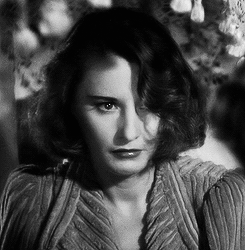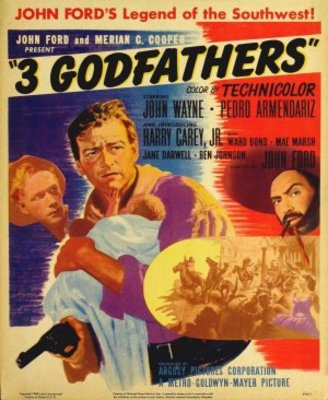Pages
▼
Monday, December 24, 2018
Friday, December 21, 2018
TCM Movie: Scrooge (A Christmas Carol) (1951)
David Lean's production of "Great Expectations" (1946) is truly at fault for the burst of all following adaptations of Charles Dickens's classics. It would be fair to assume that "many [...] would count [Great Expectations] among the greatest British films ever made." (A Christmas Carol and Its Adaptations: A Critical Examination of Dickens's Story on Screen and Television. Guida, Fred. 1999) The boom continued with Alberto Cavalcanti's "Nicholas Nickleby" (1947) which was neatly tucked between Lean's "Great Expectations" and his next adaptation in "Oliver Twist." It would only be a matter of time until someone on either side of the pond would end up making "A Christmas Carol" ... again.
The holiday classic would not be the first or last time it would be adapted having reached as far back as 1901 with 7 more adaptations until Henry Edwards's talkie "Scrooge" (1935) which starred a veteran to playing the shrewd money lender, Seymour Hicks who also starred in one of the silents back in 1913. Three years later, MGM sanitized the Christmas Eve ghost story down to "family film" fanfare with Reginald Owen in the lead. But it had been 13 years since the last British-made "A Christmas Carol" and it was indeed time for Renown Studios.
Under the original title of "Scrooge," director and producer Brian Desmond Hurst found his actor in the then beloved stage and screen actor Alastair Sim. "The Scottish born Sim was fifty-one years old when the film was made, but in keeping with its naturalistic approach, no drastic attempt was made to make him look older as MGM had done with Reginald Owen. Instead, one of the screen's great comic character actors was essentially allowed to be himself. With a wonderfully expressive face and eyes, a rich mellifluous voice, and an almost describable penchant for droll wit, irony and eccentricity, Sim was both a unique personality and a fine actor [...] As brilliant as his performance is, however, it never dominates the film. Instead, it is seamlessly integrated into a near perfect distillation of the story." (A Christmas Carol and Its Adaptations: A Critical Examination of Dickens's Story on Screen and Television. Guida, Fred. 1999)
It is popular knowledge that post-WW2 America had created an even more zealous industry in the Christmas holiday which can only be best explained for how poorly this classic holiday ghost story did in the box office. It also probably hurt that "Scrooge" now "A Christmas Carol," in the states, premiered November 28th, 1951 just outside of the holiday window and to very mixed reviews. Bosley Crowther of The New York Times relished throwing the MGM adaptation under the bus through "A Christmas Carol" as "not conceal[ing] Dickens' intimations of human meanness with an artificial gloss. The usual conceptions of Christmas in terms of puddings and flowing bowls are not visualized in this picture to any conspicuous degree. Even the gay board of the Cratchits is kept on a modest scale, and cheerfulness rather than foodstuffs is apparent in the home of nephew Fred." "In short, what we have is this rendition of Dickens' sometimes misunderstood "Carol" is an accurate comprehension of the agony of a shabby soul. And this is presented not only in the tortured aspects of Mr. Sim but in the phantasmagoric creation of a somber and chilly atmosphere." Variety, however, was even less forgiving and hated the film with a, according to Guida, review that "must surely rank as one of the most dunderheaded reviews of all time." Alastair Sim was said to "stalk[...] through the footage like a tank-town Hamlet." But overall, Variety found it as "a grim thing that will give tender-aged kiddies viewing it the screaming-meemies, and adults will find it long, dull and greatly overdone."
"A Christmas Carol" will be shown on Turner Classic Movies December 23rd, 10:00 EST/9:00 CST
Happy Yule, dear readers!
Wednesday, December 19, 2018
Monday, December 17, 2018
Thursday, December 13, 2018
TCM Movie: 3 Godfathers (1949)
According to Hollywood legend, the well known and loved Western actor Harry Carey died at the age of 69 from a Black Widow spider bite at his home in Brentwood. Other sources believe he passed away of lung cancer or coronary thrombosis, having smoked cigars for most of his adult life. Carey had acted in two prior iterations of the Peter B. Kyne novel "3 Godfathers" (1916) as well as the John Ford directed "Marked Men" in 1919 which is now considered lost.
"Marked Men" was still owned by MGM who Ford still had major issues with when it came to Louis B. Mayer. MGM's policies towards independent directors was not the easiest for mavericks like Ford and a little before the film began to make its roots, that was when Carey, a friend and mentor to Ford, had passed away. "3 Godfathers" would be an homage of the film he had once made in technicolor. The homage went as far as to opening the film eulogizing the actor as the "bright star of the early western sky" as well as opening on a wide shot of a lone rider (Cliff Lyons) silhouetted and sitting on the horse like Carey had done in the many Western films he had made. Ford even cast Carey's son, Harry Carey Jr., as "The Abilene Kid," one of the "three wise men" who are resorted to take care of an orphaned newborn boy after its mother had died in childbirth.
But "Uncle Jack," as Jr. had known him as his whole life, was not very nice to him throughout the shooting. One instance involved Ford picking up a rock and "lobbed it straight at Carey's face. The actor ducked, and the rock landed square in Pedro Armendariz's stomach." Ford did let it be known that Carey was "going to hate my guts before the picture is over." If he wasn't verbally bemoaning that "we should have gotten Audie Murphy!", Ford would have had his honorary nephew bend over and kick him hard for some mistake Carey had made during a scene. For as much abuse Jr. had been put through, Ford made sure he wouldn't be on set when shooting the beginning shot that eulogized his father with his father's favorite horse, Sonny. "Once Carey's final scenes were shot, Ford demanded him to go home. Carey refused, thinking Ford was just being mean, but Ford won out in the end. [...] Ford knew that watching the scene shot would be too much for the young Carey, so he shielded Carey from it, as a doting "uncle" would a "nephew."" ("3 Godfathers" - 1949 - Articles - TCM.com")
The John Wayne-helmed film was released December 1, 1948 and ended up #62 on the Top-Grossers of 1949, earning 2,078,000 in the U.S. and Canada and 763,000 overseas. Bosley Crowther at the New York Times praised Ford's cinematography as "film[ing] it so that the characters and gritty atmosphere that slosh from the screen great warm sluices of grandeur and emotion." Wayne was considered "wonderfully raw and ruticous," Armendariz "colorful [with a] a real note of pathos," and Harry Carey Jr., for all of the abuse he was put through, as "touching."
3 Godfathers will air on TCM December 15 at 9:30 EST/8:30 CST
Tuesday, December 11, 2018
7 Times Actresses Were Ultimate Beauty Goals in Christmas Movies
 |
| Barbara Stanwyck in "Remember the Night" (1940) |
 |
| Marjorie Reynolds in "Holiday Inn" (1942) |
 |
| Myrna Loy in "The Thin Man" (1934) |
 |
| Rosemary Clooney in "White Christmas" (1954) |
 |
| Simon Simone in "The Curse of the Cat People" (1944) |
 |
| Vera Ellen in "White Christmas" (1954) |
 |
| Shirley Temple in "I'll See Seeing You" (1944) |





